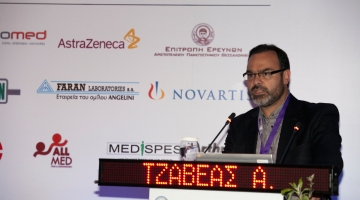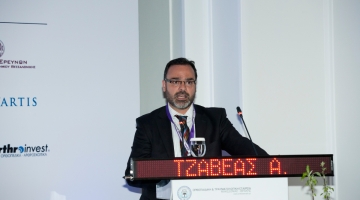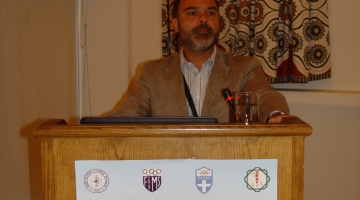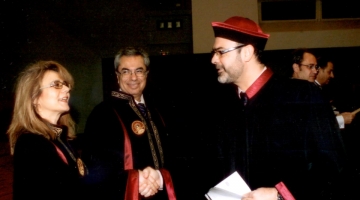Knee arthroscopy
Knee arthroscopy is a key-hole surgery in which through small holes on the skin (about 1 cm) instruments and camera are inserted into the joint, through which diagnosis can be made and treatment of any conditions can be carried out.
Knee injuries
Unfortunately most candidates for knee arthroscopy are athletes or athletic young individuals with a history of injury (usually rotational) of the knee and pain that does not improve with rest and physiotherapy. The most common activities related to knee injuries are football, alpine skiing and most contact sports.
In knee injuries the menisci (medial and lateral), the cruciate ligaments (anterior and posterior) or the collateral ligaments (medial and lateral) may rupture, and chondral lesions may occur in the femur, the tibia or the patella.
-
Meniscal tears
The medial meniscus is most commonly torn. In these cases the surgeon aims to suture the meniscus (meniscal repair with sutures arthroscopically) or partially resect the torn segment (when repair is impossible).
-
Ruptured cruciate ligament
The anterior cruciate is the most common site. The rupture may be partial or complete. It is generally accepted that a break of more than 50% of the mass of the anterior cruciate necessitates ligament reconstruction. There are several methods for the reconstruction of the anterior cruciate ligament, the most widely used is harvesting the hamstrigns (tendons located in the neighboring area of the knee) or the patellar tendon.
-
Chondral lesions
Chondral lesions are treated with arthroscopic stabilization of cartilage surface or the microfracture technique. In case of severe lesions (large area or increased depth) novel techniques may be used by which cartilage may be harvested of other areas of the bodies, then proliferated and placed to the injured area.
Degenerative changes of the knee joint
Knee arthroscopy is also indicated in patients with mild arthritis. The aim of the technique is to wash-out the knee, to remove free bodies and osteophytes where possible, to smooth the articular cartilage and to diagnose the severity of arthritis. However, both the surgeon and the patient should be cautious with the expectations after arthroscopy in early arthritis, as the results are not predictable and improvement of symptoms may not last for too long.








